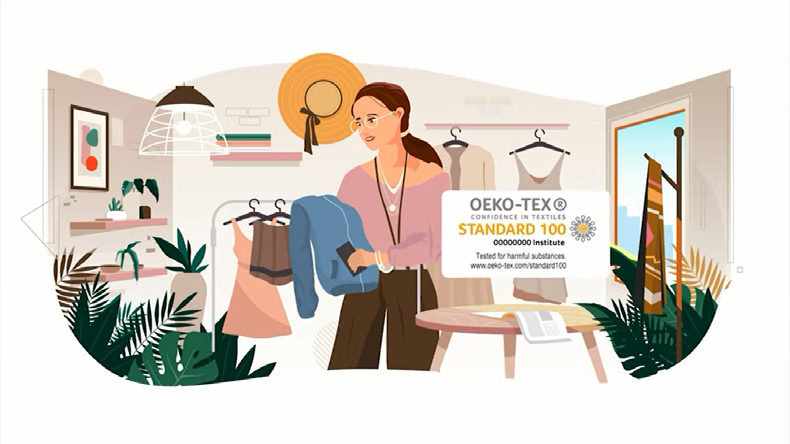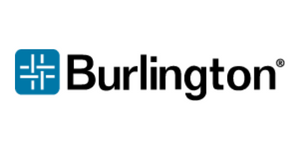If you’re a uniform provider, you’ve likely seen retailers or manufacturers overuse buzzwords like sustainable or organic when labeling and marketing their garments. The problem with these words is that anyone can use them and they can refer to anything about the garment-making process.
The issue is – these words simply don’t mean what you think they do. For instance, they don’t automatically mean that the garment was made using sustainable resources or with organic materials. Fibers that are grown organically, but are created with toxic chemicals are still allowed to call themselves organic because it’s not stated exactly what organic refers to.
Additionally, ‘wrinkle-free’ labels can signify that a dangerous chemical like formaldehyde resin was used to treat the fabric. It’s all a possibility and one that may not be worth the risk. So, if we can’t immediately trust that fabric is organic or sustainable based on its labels, how do we know what to trust? What do we look for?
Enter OEKO-TEX.

OEKO-TEX is a revolutionary certification system for textile producers. Operated by a network of interconnected laboratories across the world, these lab workers and technicians test for harmful substances and chemicals that may be prohibited or regulated by law. Among the other standards, they test for include color fading and acidity, which are just precautionary measures to protect the welfare and health of the garment makers at every step of the production cycle. How the textile is used typically determines the stringency of the tests themselves. For instance, the more prolonged and direct contact the textile will have with the future wearer, the more demanding the requirements can be.
In these tests, all components including sewing, threading, lining, buttoning, etc. of the product must comply with these standards. There are no exceptions. Because of the strict protocols put in place to regulate garment-making, OEKO-TEX is widely considered to be the very best in safety and environmental protection testing and regulating.
OEKO-TEX Certifications
There are, of course, different certifications and classifications a uniform manufacturer can earn with OEKO-TEX. It just depends on what they’re hoping to achieve with the specific garment. OEKO-TEX offers companies various types of certifications and services – all in the name of verifying the safety of products and their production processes for health and the environment. Let’s break each down according to the OEKO-TEX website.
Leather Standard

This certification is a product label for leather articles from all stages of production that have been tested for harmful substances. Leather and leather articles from all processing levels can be certified: from semi-finished leather products (wet-blue, wet-white, etc.) to finished articles. This includes leather fiber materials, leather clothing, leather accessories such as leather gloves, leather bags, and leather shoes. It does not certify the leather from exotic or protected animals such as crocodiles, snakes, and armadillos.
STeP
This stands for Sustainable Textile & Leather Production and certifies the manufacturing process for environmentally-friendly and socially responsible production facilities. The target groups for STeP certification are textile and leather manufacturers as well as brands and retailers. STeP certification includes a comprehensive analysis and assessment of the production conditions.
It analyses all important areas of a company using 6 modules:
- Chemical management
- Environmental performance
- Environmental management
- Social responsibility
- Quality management
- Health protection and safety at work
Made in Green
This certification is a traceable product label for textiles and leather goods made of materials that have been tested for harmful substances and which have been manufactured in environmentally-friendly facilities under socially responsible working conditions.
DETOX TO ZERO
This certification enables production facilities along the supply chain to assess, by means of an annual status report, whether the chemicals management and wastewater/sludge quality meet the goals of the Greenpeace Detox Campaign.
ECO PASSPORT

This identifies chemicals, colorants, and auxiliaries used in the textile and leather industry, which are not harmful to health and which are environmentally friendly.
STANDARD 100

This product label is for textile products from all processing stages that have been tested for harmful substances. No other label is as prestigious as the Standard 100. If you want to be a successful manufacturer, you need to cater to the growing demands of the customer. And nowadays customers want to invest in brands that adhere to regulatory standards and employ the use of sustainable resources and organic materials in their garment-making. And they have to have the labels and proof to back it up.
It’s not enough to just slap an organic label on the garment anymore. You need to show your customers or retailers you have the same shared commitment to safety and quality as the next manufacturer. You can show this easily by gaining the Standard 100 certification.
Such certification can ensure a decisive competitive advantage for manufacturers in a heavily populated and ever-evolving industry. It’s a certification that’s uniformly performed around the world and can be applicable to textile products of all processing steps.
Applying for the Standard 100.

Gaining that Standard 100 label means customers will be able to trust you and you will be able to gain certainty when selecting new suppliers along the textile chain. You can also keep an overview of the internationally differing requirements, which can be a challenge for manufacturers in their daily practice.
But who can apply for Standard 100?
How do you apply for it, more importantly? If you want to gain the Standard 100 certification, you have to meet certain criteria. From the OEKO-TEX website, all the components and materials of your textile product must comply with the test criteria.
If the results of the quality audit that are conducted by an independent OEKO-TEX institute arrive positive and regular quality assurance measures are demonstrably taken, you have taken the necessary steps on the path of certification. Then, all you have to do is sign the General Terms of Use and the Standard 100 certification is yours.
There are five key steps in earning your certification. One is completing the required application form. Two is the selected institute getting in touch with you. Three is after examining your documents, they define the scope of the audit and success parameters. They then test your articles according to Standard 100.
If your product has successfully passed the laboratory test, you receive the Standard 100 certificate together with a detailed test report and have completed the fourth step. Lastly, an expert will visit your site before or after certification in order to confirm all the details. The best part is: Any manufacturer or reseller of textile materials can apply for certificate ownership.
Conclusion: The New Standard

In 2021, it’s clear that OEKO-TEX is the preferred testing and certifying method by textile manufacturers all around the world for environmental protection and personal safety. When retailers see manufacturer catalogs with products that contain the Standard 100 or any OEKO-certification, they will feel assured that the garment or textile is safe and free of harmful chemicals or substances.
They will know they can trust you because you have demonstrable proof that you share the same commitment to safety and quality that they do. And since shoppers are going green and specifically invest in brands that care about sustainability, suppliers will immediately gravitate to the manufacturers who cater to that audience. You won’t find a manufacturer who cares and remains committed to safety more obviously than the manufacturer who invests the time into certifying their textiles.













